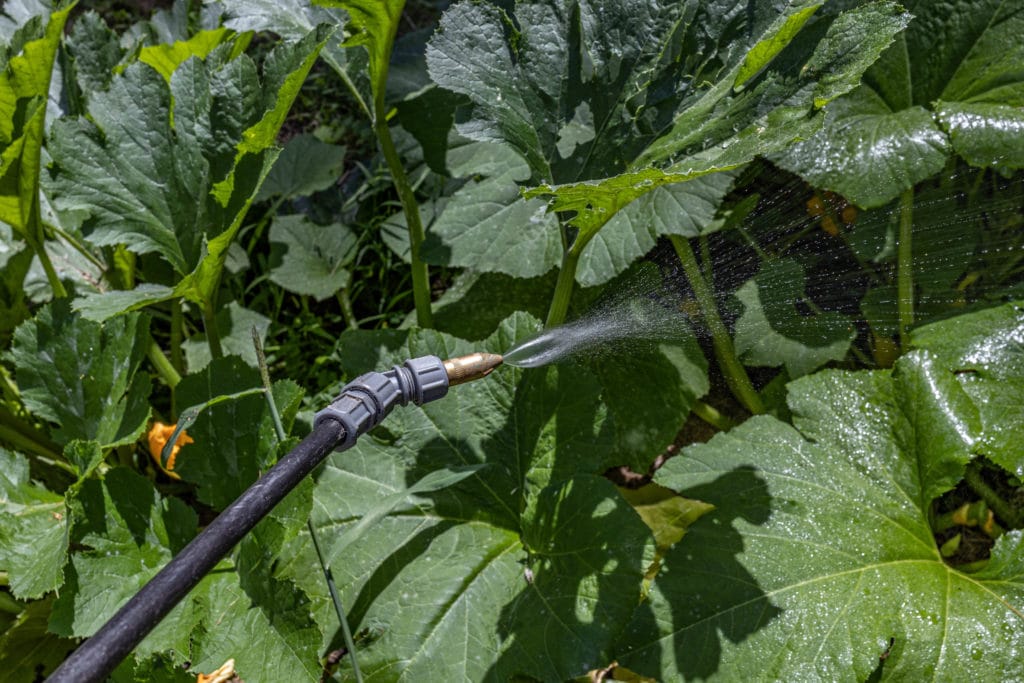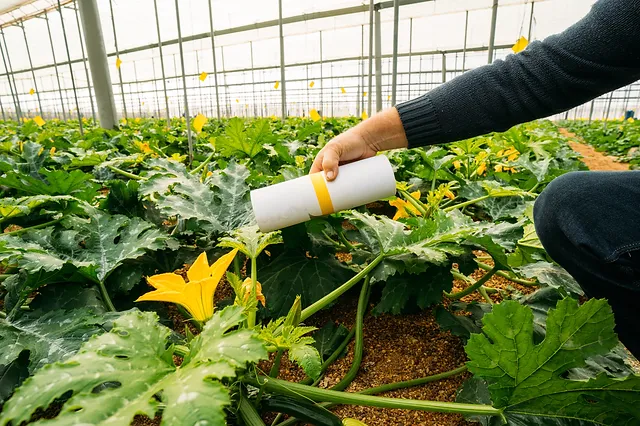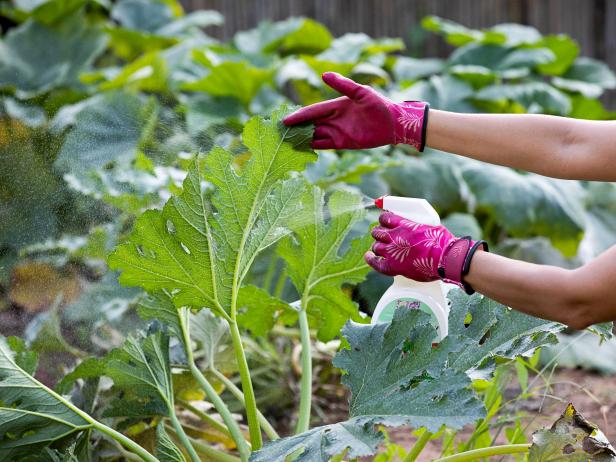Standing amidst the lush greenery of my beloved greenhouse, I reveled in the vibrant symphony of life thriving under my care. Yet, this verdant paradise was not immune to nature’s relentless invaders—bugs.
The quest to protect my cherished plants and preserve the sanctity of this enclosed Eden led me to explore the art of keeping bugs out of the greenhouse. So, I tried some techniques.
Here are the methods I follow To get rid of the problem:
- Maintain Greenhouse Cleanliness
- Harness Natural Predators
- Deploy Sticky Traps
- Frequent Plant Inspection
- Utilize Insecticidal Soaps or Neem Oil
- Avoid Overwatering
- Designate Separate Footwear
- Implement Reflective Mulch
- Combine Diatomaceous Earth and Sticky Barriers
- Adopt Crop Rotation
- Quarantine New Plants
- Vacuum for Pest Removal
- Secure Openings with Netting
- Ensure Adequate Ventilation
In this guide, we embark on a shared journey of discovery, uncovering the secrets of maintaining a bug-free haven within the confines of your greenhouse. So, let’s step into the world of greenhouse bug control, and ensure your garden remains a haven of pure, uninterrupted growth.
How To Recognize Problematic Greenhouse Bugs?

Regular Inspection: Perform regular inspections of your greenhouse plants. A routine walkthrough can help you identify issues early. Look for signs of damage, wilting, yellowing, or unusual growth patterns.
Use a Magnifying Glass: Many pests are tiny and difficult to see with the naked eye. A magnifying glass or a hand lens can be a useful tool for spotting these insects.
Identify Common Pests: Familiarize yourself with common ones. Some of the most problematic ones include:
- Aphids: Small, soft-bodied insects that often cluster on the undersides of leaves. They come in various colors, including green, yellow, and black.
- Whiteflies: Tiny, white, moth-like insects that fly around when disturbed. They feed on plant sap and excrete sticky honeydew, which can lead to sooty mold growth.
- Spider Mites: Nearly invisible to the naked eye, these arachnids leave fine webbing on plants. They cause stippling or yellowing of leaves.
- Thrips: Small, slender insects that feed on plant juices, causing silvery or discolored streaks on leaves.
- Mealybugs: Soft-bodied insects covered in a waxy, cotton-like substance. They feed on plant sap and excrete honeydew.
- Scale Insects: These insects have a hard, protective shell and suck plant sap. They come in various shapes and sizes.
Check for Damage: Look for physical damage to your plants, such as holes in leaves, chewed edges, or distorted growth. Some pests may leave characteristic damage patterns.
Sticky Traps: Place sticky traps throughout your greenhouse. These traps can catch flying insects and help you monitor pest populations.
Examine the Undersides of Leaves: Many pests, such as aphids and whiteflies, prefer to hide on the undersides of leaves. Lift the leaves and inspect them carefully.
Monitor Plant Health: Pay attention to the overall health of your plants. If you notice a decline in growth or vigour, it may be a sign of infestation.
Beneficial Insects: Be aware of beneficial insects that can help control bug populations. Ladybugs, lacewings, and predatory mites are examples of insects that feed on common greenhouse pests.
Keep Records: Maintain records of your observations, including the types of insects you encounter, their locations in the greenhouse, and the damage they cause. This information can help you develop a targeted pest management plan.
SPRAYS AND POWDERS:
In garden centers, a range of natural botanical sprays and powders derived from plants, rather than synthetic lab-made chemicals, are readily available. Let’s delve into a few of these commonly used natural pest control methods:
Insecticidal Soap: This remedy consists of sodium or potassium salts combined with fatty acids. For it to be effective, it must make direct contact with the target insect and remain wet. Insecticidal soap works by penetrating the insect’s outer protective layer, causing cellular collapse.
Also, it stands out as a safe organic pesticide with several advantages: no residue, non-toxic to animals, and suitable for use on vegetables right up to harvest. However, a word of caution—this soap can potentially harm plants, so avoid using it in full sun or high temperatures.
Bacteria Spray (Bt): Known as Bacillus thuringiensis (Bt), this method offers a unique approach to pest control. It comes in various strains, over 80 in fact, used as pesticides. It acts as a stomach poison, releasing toxins in the insect’s stomach, compelling them to cease eating and eventually starve to death.
Usually available in powdered form for sprinkling or dusting on plants, it must be ingested by the targeted insect. It is highly specific to its hosts and poses no threat to people, pets, birds, or bees. However, it works slowly, taking several days for the insect to stop eating and succumb. Additionally, it may inadvertently harm beneficial garden insects.
Neem Spray: Derived from the seed kernels of the neem tree fruit, this spray disrupts an insect’s hormonal system when applied to the plant’s leaves. It prevents the insect from reaching maturity, making it most effective against immature insects and those undergoing complete metamorphosis.
While neem is non-toxic to humans, exercise caution around pets and allow sprayed leaves to dry before exposing them to animals.
Horticultural Oil: This solution comprises highly refined petroleum oil mixed with water, which is then sprayed onto plant foliage. It works by suffocating insects or disrupting their feeding. Horticultural oil boasts low toxicity levels for humans, pets, and birds, leaving no toxic residue behind. However, take care not to burn your plants’ leaves during application.
Rotenone and Pyrethrum: These botanical remedies are often used together and are derived from tropical legume roots. Typically available in powder form for dusting onto plants, they interfere with cellular processes, essentially depriving insects of oxygen within their tissues. They offer broad-spectrum pest control and are effective against various pest types.
Spicy Chili and Garlic Spray Recipe: To prepare this natural pest control solution, combine the fiery kick of two hot peppers (or substitute with 2 tsp. dried cayenne if necessary) with a full bulb of garlic cloves in 2 cups of water.
Further, after filtering the mixture through a coffee filter to remove solids, transfer the resulting solution into a spray bottle. Apply this homemade remedy every 2-3 days, ensuring comprehensive coverage of all affected plant parts.
More additional options:
- Carnivorous Plants: These fascinating plants like Venus Flytraps, Pitcher Plants, and Sundews are natural bug catchers. They attract and trap insects, acting as a built-in pest control system in your greenhouse.
- Marigolds: These bright flowers give off a scent that keeps certain garden pests like aphids away. Planting marigolds not only helps with pollination but also keeps harmful pests at bay.
- Garlic, Chives, Onions, and Scallions: These strong-smelling herbs work as natural insect repellents. Their aroma discourages spider mites and aphids from invading your greenhouse.
- Basil: Aromatic basil contains essential oils that repel insects such as flies and mites, making it a valuable addition to your greenhouse.
- Lavender: Besides its calming effects, lavender also repels insects, especially moths, helping to maintain a pest-free greenhouse environment.
- Lemon Balm: Lemon balm, rich in citronellal, emits a lemony scent that bugs dislike. It’s a reliable repellent against gnats and other annoying insects.
- Rosemary: This versatile herb acts as a natural insect repellent, effectively deterring flying insects like cabbage moths and various other garden pests.
- Mint: With its refreshing scent, mint is a valuable asset in any greenhouse. It keeps ants, mosquitoes, and moths away, improving overall pest management.
- Petunias: Petunias contain limonene, a chemical that repels destructive insects like aphids, tomato hornworms, and squash bugs.
Top ways to keep bugs away from green house?

Maintain Greenhouse Cleanliness: Regularly sweep or rake the greenhouse floor, clean shelves, and remove any decaying plant material. Thoroughly clean and sanitize pots and trays before storage.
Harness Natural Predators: Not all insects are harmful; some are natural predators like ladybugs, praying mantises, lacewings, and predatory mites. These beneficial insects help control pests such as aphids, spider mites, crickets, and thrips.
Deploy Sticky Traps: Employ hanging sticky traps strategically near your plants to capture flying pests, luring and trapping them effectively.
Frequent Plant Inspection: Consistently inspect your plants for any signs of pest infestations. Keep an eye out for visual clues and take prompt action when something appears unusual.
Utilize Insecticidal Soaps or Neem Oil: Regularly apply insecticidal soaps or neem oil to your plants as a natural defense against pests like aphids, spider mites, and whiteflies.
Avoid Overwatering: Prevent excess moisture buildup in the soil by watering your plants appropriately and allowing the soil to dry between watering sessions. Overwatering can attract pests like fungus gnats.
Designate Separate Footwear: Maintain a separate pair of shoes exclusively for use inside the greenhouse to prevent the introduction of pests from outside.
Implement Reflective Mulch: Utilize reflective mulch to confuse flying insects, such as winged aphids, whiteflies, thrips, and leafhoppers. This mulch reflects ultraviolet light, disrupting the insects’ ability to locate their host plants.
Combine Diatomaceous Earth and Sticky Barriers: Enhance control over crawling pests like slugs and snails by using sticky barriers like Tanglefoot around the base of larger plants. Pair this with Diatomaceous Earth for added pest control.
Adopt Crop Rotation: Prevent pest buildup in the soil and aid soil recovery between crops by practising crop rotation within your greenhouse.
Quarantine New Plants: Before introducing plants from external sources to your greenhouse, quarantine and treat them with antibacterial soap and neem oil to prevent the introduction of new pests.
Vacuum for Pest Removal: Employ a household vacuum cleaner to remove pests from both plants and greenhouse surfaces effectively.
Secure Openings with Netting: Cover windows and door openings with netting to keep flying pests like aphids and whiteflies out while allowing air and light to enter.
Ensure Adequate Ventilation: Install roof and side vents to maintain proper greenhouse ventilation, discouraging humidity buildup that can attract pests.
FAQ
1. How do I keep mites out of my greenhouse?
To prevent mites, maintain good greenhouse hygiene, use natural predators like predatory mites, and consider applying horticultural oils or insecticidal soaps.
2. How do you control pests in a commercial greenhouse?
Pest control in commercial greenhouses often involves integrated pest management (IPM) strategies, including the use of beneficial insects, traps, biological control agents, and careful monitoring.
3. What are biological control agents for control of pests in greenhouses?
Biological control agents, such as ladybugs, predatory mites, and parasitoid wasps, are natural enemies of greenhouse pests and are used to control pest populations in an eco-friendly manner.
4. How do I get rid of mosquitoes in my greenhouse?
To eliminate mosquitoes, ensure good ventilation, remove standing water sources, and use mosquito screens or netting to prevent entry.
5. How do I control aphids in my greenhouse?
Controlling aphids in a greenhouse can involve releasing ladybugs, using insecticidal soaps or neem oil, and maintaining a clean and healthy growing environment to deter infestations.
Conclusion:
To sum up, to keep bugs out of my greenhouse, I focus on cleanliness, using beneficial insects like ladybugs, and hanging sticky traps for flying pests. Regular plant checks help me catch problems early, and I apply natural sprays like neem oil.
Moreover, I’m careful with watering to avoid attracting bugs and wear different shoes inside to prevent pests from coming in. Reflective mulch confuses flying insects, while barriers and Diatomaceous Earth tackle crawlers.
Furthermore, I rotate crops, quarantine new plants, and even vacuum pests when needed. Covering openings with netting and ensuring good ventilation also help maintain a pest-free greenhouse.

